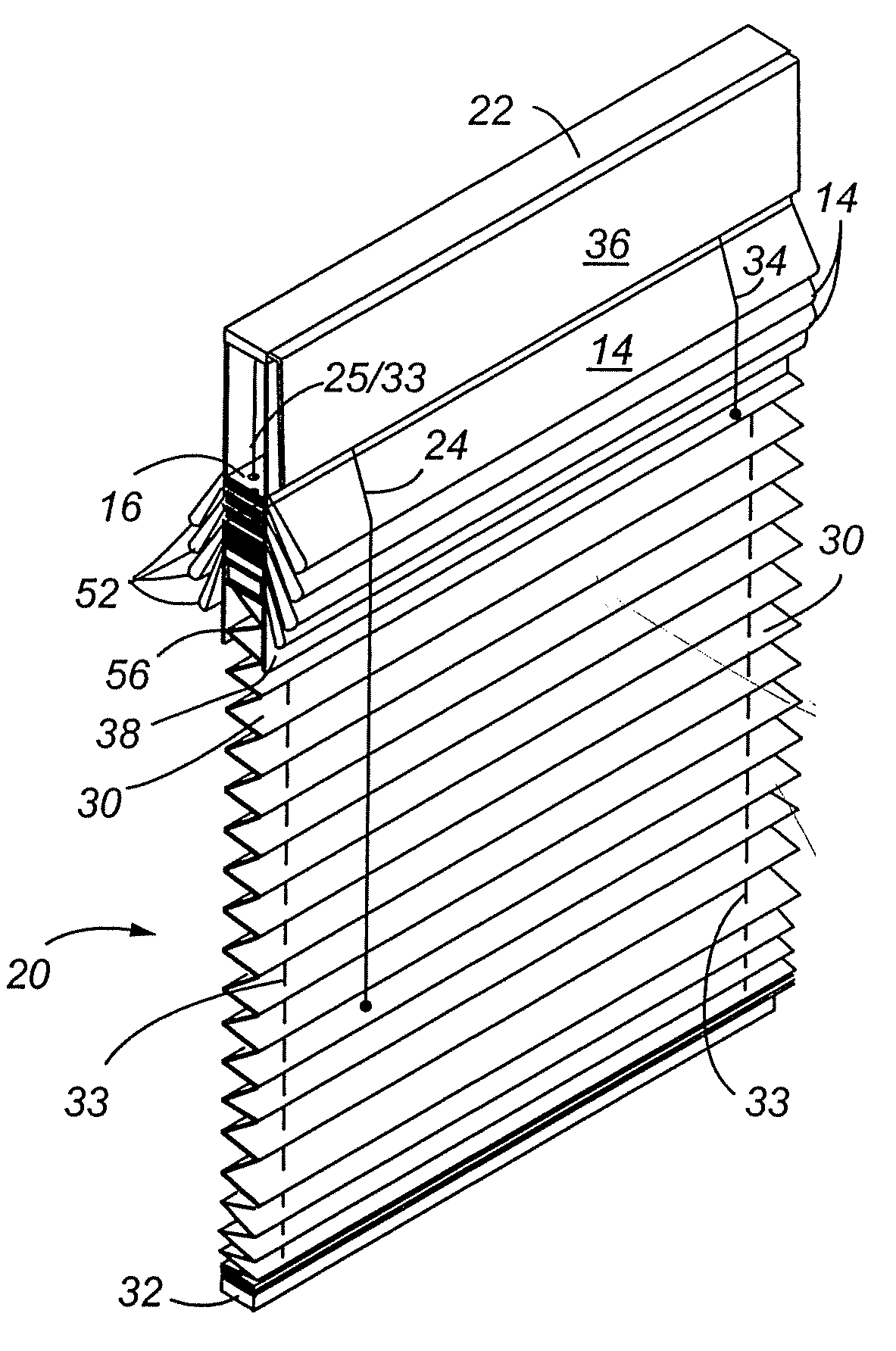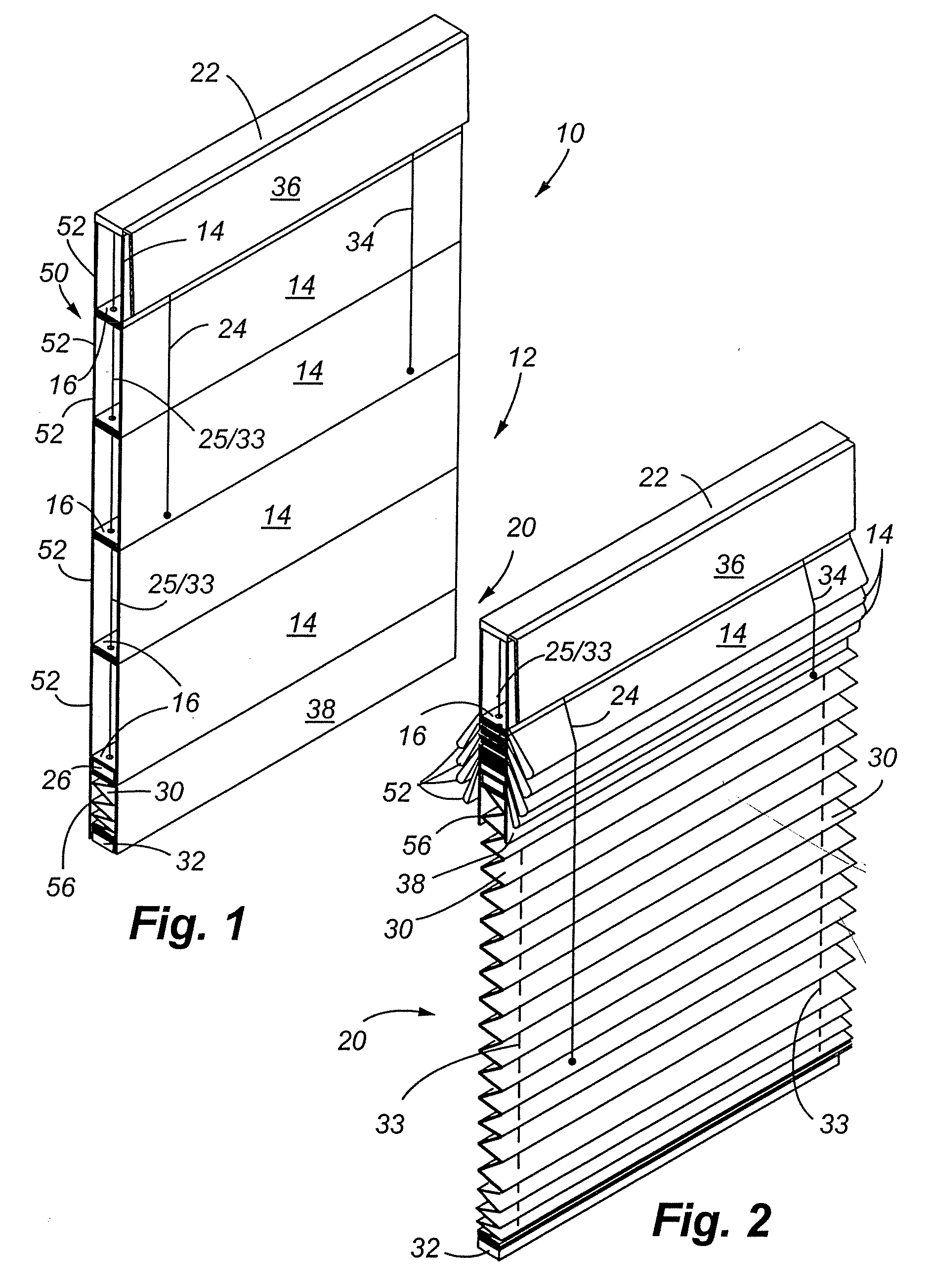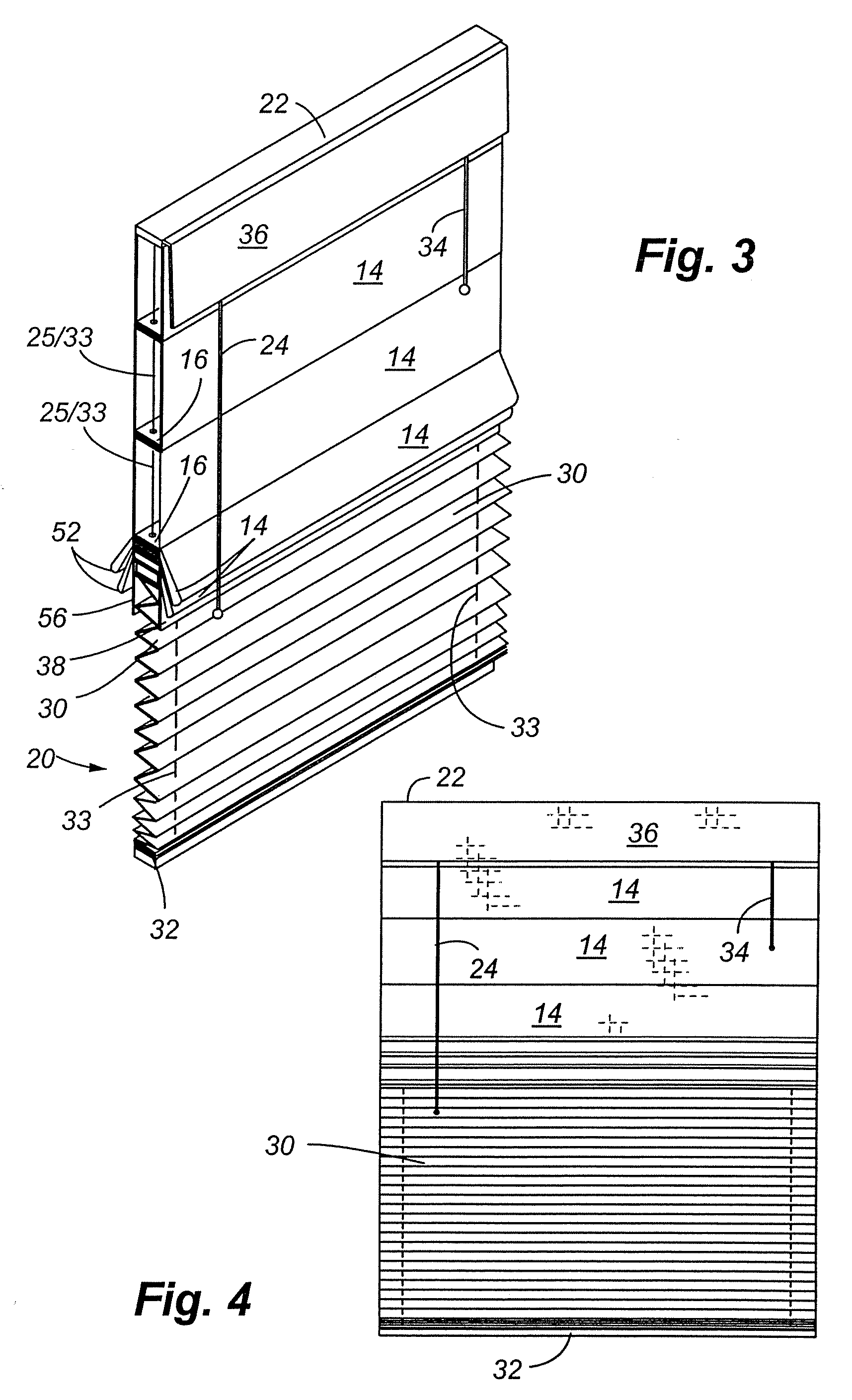Roman Shade
a roman shade and shade technology, applied in the field of roman shades, can solve the problems of unattractive prior art roman shade constructions, difficult to heat and cool such structures, and difficult to handle, and achieve the effect of raising and lowering the shade, raising or lowering the shear
- Summary
- Abstract
- Description
- Claims
- Application Information
AI Technical Summary
Benefits of technology
Problems solved by technology
Method used
Image
Examples
Embodiment Construction
[0022]FIGS. 1-10 illustrate a first preferred embodiment of the present invention. Referring first to FIGS. 1-3, the Roman shade 10 comprises a front face or body 12 and a rear face or body 50. The front and rear faces are separated into respective front panels 14 and rear panels 52. An insulating cell is a rectangular shaped open space or gap created between respective facing panels of the front and rear faces when the shade is lowered. More specifically, the front and rear panels each have exposed exterior surfaces and non-exposed interior surfaces. The facing interior surfaces of oppositely disposed front and rear panels form vertical boundaries defining the cells. The horizontal boundaries of the cells are formed by the respective pleat assemblies 16. A pleat assembly 16 is located at each horizontal line of connection between the rear and front panels.
[0023]The optional sheer assembly 20 is hung below a bottom rail 26 connected to lower ends of the faces 12 and 50. Reference ma...
PUM
 Login to View More
Login to View More Abstract
Description
Claims
Application Information
 Login to View More
Login to View More - R&D
- Intellectual Property
- Life Sciences
- Materials
- Tech Scout
- Unparalleled Data Quality
- Higher Quality Content
- 60% Fewer Hallucinations
Browse by: Latest US Patents, China's latest patents, Technical Efficacy Thesaurus, Application Domain, Technology Topic, Popular Technical Reports.
© 2025 PatSnap. All rights reserved.Legal|Privacy policy|Modern Slavery Act Transparency Statement|Sitemap|About US| Contact US: help@patsnap.com



